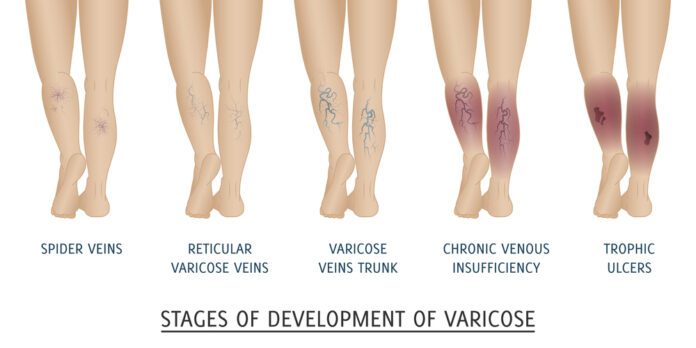Overview Of Vein – Stasis Dermatitis
Vein – Stasis Dermatitis is synonymous with Stasis Dermatitis. Stasis Dermatitis is a change in the skin that results in the pooling of blood in the veins of the lower leg. Ulcers are open sores that can result from untreated stasis dermatitis.
Venous ulcers are also referred to as stasis, insufficiency, or varicose ulcers.
Commonly Associated With
Venous stasis ulcers; Ulcers – venous; Venous ulcer; Venous insufficiency – stasis dermatitis; Vein – stasis dermatitis
Causes Of Vein – Stasis Dermatitis
Venous insufficiency is a long-term (chronic) condition in which the veins have problems sending blood from the legs back to the heart. This may be due to damaged valves that are in the veins.
Some people with venous insufficiency develop stasis dermatitis. Blood pools in the veins of the lower leg. Fluid and blood cells leak out of the veins into the skin and other tissues. This may lead to itching and inflammation, which cause more skin changes. The skin may then break down to form open sores.
Symptoms Of Vein – Stasis Dermatitis
You may have symptoms of venous insufficiency including:
- Dull aching or heaviness in the leg
- Pain that gets worse when you stand or walk
- Swelling in the leg
- At first, the skin of the ankles and lower legs may look thin or tissue-like. You may slowly get brown stains on the skin.
The skin may become irritated or crack if you scratch it. It may also become red or swollen, crusted, or weepy.
Over time, some skin changes become permanent:
- Thickening and hardening of the skin on the legs and ankles (lipodermatosclerosis)
- A bumpy or cobblestone appearance of the skin
- Skin turns dark brown
- Skin sores (ulcers) may develop (called a venous ulcer or stasis ulcer). These most often form on the inside of the ankle.
Exams & Tests
The diagnosis is primarily based on the way the skin looks. Your health care provider may order tests to examine the blood flow in your legs.
Stasis dermatitis can also be related to heart problems or other conditions that cause leg swelling. Your provider may need to check your general health and order more tests.
Treatment Of Vein – Stasis Dermatitis
Your provider may suggest the following to manage the venous insufficiency that causes stasis dermatitis:
- Use elastic or compression stockings to reduce swelling
- Avoid standing or sitting for long periods of time
- Keep your leg raised when you sit
- Try varicose vein stripping or other surgical procedures
- Some skin care treatments can make the problem worse. Talk with your provider before using any lotions, creams, or antibiotic ointments.
Things to avoid:
- Topical antibiotics, such as neomycin
- Drying lotions, such as calamine
- Lanolin
- Benzocaine and other products meant to numb the skin
Treatments your provider may suggest include:
- Unna boot (compressive wet dressing, used only when instructed)
- Topical steroid creams or ointments
- Oral antibiotics
- Good nutrition



